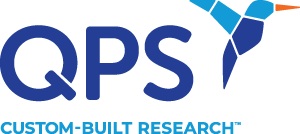Gene therapy for ocular disease is a rapidly evolving field with promise as a treatment option for various genetic and acquired eye diseases. It uses viral and non-viral vectors to deliver therapeutic genes into ocular tissues to treat a range of corneal and retinal conditions. However, one of the primary concerns that remains in gene therapy for ocular disease is the immune and inflammatory responses that treatments can trigger. Researchers are actively investigating novel approaches to address these concerns and create safe, effective, and efficient ocular gene therapy options.
Ocular Gene Therapy Approaches
Thanks to its small size, ease of access, and immune-privileged state, the eye is a promising target for gene therapy. However, given the eye’s susceptibility to inflammation, the immune system and inflammatory responses that can be triggered by gene therapy remain a serious concern.
Currently, research is focused on finding safe and effective ocular gene therapies for a range of diseases and conditions, including the following:
- Non-inherited corneal diseases, such as Herpes simplex keratitis (HSK), Sjogren’s syndrome, corneal graft rejection, and corneal neovascularization
- Inherited corneal diseases, such as Mucopolysaccharidosis (MPS), Meesmann epithelial corneal dystrophy, ectrodactyly-ectodermal dysplasia-clefting syndrome, aniridia, and Fuchs endothelial corneal dystrophy
- Glaucoma
- Retinal disorders, such as X-linked Retinoschisis (XLRS), Stargardt disease, choroideremia, Retinitis Pigmentosa, Usher syndrome, achromatopsia, Leber congenital amaurosis, non-neovascular and neovascular age-related macular degeneration, and diabetic retinopathy/diabetic macular edema
- Leber hereditary optic neuropathy (LHON)
Gene therapy for ocular disease is delivered by viral or non-viral vectors. Today, the most common viral vectors used are adeno-associated viruses (AAVs) and lentiviruses.
AAVs
AAVs — in particular, the AAV2 and AAV8 serotypes — are the most common vectors used and studied in ocular gene therapy trials today. Indeed, AAV2 is the vector used in LUXTURNA®, the first ocular gene therapy approved by the Food and Drug Administration (FDA).
AAVs have several significant advantages. They do not integrate into the human genome, which, critically, reduces the risk of insertional oncogenesis. AAVs can also infect dividing and non-dividing cells, allowing for broad cellular tropism. And unlike adenoviruses, AAVs trigger “relatively mild innate and adaptive immune responses, which allow for stable long-term gene expression. These characteristics make AAV vectors particularly suited for applications in a variety of ocular diseases.”
However, AAVs still present some treatment challenges. Because AAV is a small virus, it is limited in its ability to carry the large-sized genetic material required to treat certain diseases coded by large genes. Another challenge is that preexisting antibodies against AAV2 in most individuals can reduce treatment efficacy.
Lentiviruses
Lentiviruses can be modified to reduce the body’s inflammatory response and, like AAVs, are safe and effective in gene transduction. Unlike AAVs, however, lentiviruses can carry large-sized therapeutic genes. Lentiviruses may even be more immunogenic than AAVs. Still, as with similar viral vectors, lentiviruses can increase insertional mutagenesis and oncogenesis risk.
Non-Viral Vectors
Non-viral vectors were developed to bypass the immune system response risk associated with viral vectors. Both physical and chemical non-viral delivery systems have a lower risk of insertional mutagenesis and the ability to deliver large amounts of genetic materials, which are significant advantages. However, non-viral vectors have one major disadvantage: short-term expression of transduced material.
Immune and Inflammatory Responses
Inflammatory reactions following ocular gene therapy are typically mild and are often manageable with topical, local, or systemic steroids. However, there is still a possibility of severe inflammatory responses that may necessitate aggressive intervention to prevent permanent vision loss.
Over time, numerous preclinical and clinical studies have consistently shown that the severity of immune and inflammatory responses is closely linked not only to the choice and dose of vectors but also to the mode of delivery (be it intravitreal, subretinal, or suprachoroidal). Each of these delivery methods has its unique advantages and challenges.
Ocular Gene Therapy Delivery Methods
Intravitreal delivery method advantages include being relatively non-invasive, safe, and surgically simple. However, it can also induce a significant humoral immune response, potentially reducing treatment efficacy.
The subretinal delivery method has a number of its own important advantages: injecting vectors that transduce the outer retina is a well-studied and well-established method. Because the subretinal space has a particular immunological response, this method also has the benefit of a minimal to nonexistent humoral response. The primary disadvantage of subretinal delivery is the potential complications associated with the surgery itself.
Suprachoroidal delivery has several advantages over other methods: it is less invasive than the subretinal route, and it can potentially trigger a weaker immune response than the intravitreal route (although secondary inflammation is still possible). Unlike the intravitreal route, it can also deliver vectors to the outer retina. However, suprachoroidal delivery may not sustain gene expression, and reports on efficacy are inconsistent.
Looking Forward
Gene therapy for ocular disease remains among the most promising subsets of ongoing gene therapy research. More research is still required to understand the vectors, dosing, and delivery methods best suited for safe and effective ocular gene therapy. The hope remains that as researchers better understand how to reduce inflammation and immune system response risk without sacrificing treatment efficacy, the more widely available effective ocular gene therapy options will become.
QPS is a GLP- and GCP-compliant contract research organization (CRO) delivering the highest grade of discovery, preclinical and clinical drug research development services. Since 1995, it has grown from a tiny bioanalysis shop to a full-service CRO with 1,200+ employees in the U.S., Europe and Asia. Today, QPS offers expanded pharmaceutical contract R&D services with special expertise in neuropharmacology, DMPK, toxicology, bioanalysis, translational medicine and clinical development. An award-winning leader focused on bioanalytics and clinical trials, QPS is known for proven quality standards, technical expertise, a flexible approach to research, client satisfaction and turnkey laboratories and facilities. Through continual enhancements in capacities and resources, QPS stands tall in its commitment to delivering superior quality, skilled performance and trusted service to its valued customers. For more information, visit qpsoldstg.wpenginepowered.com or email [email protected].






